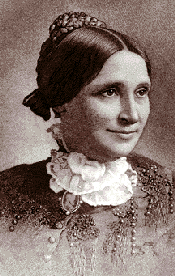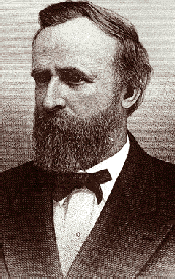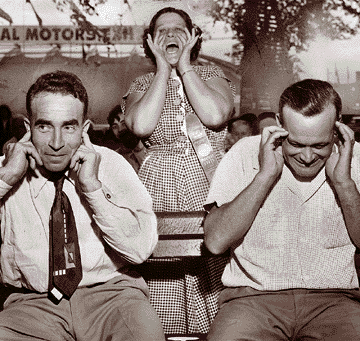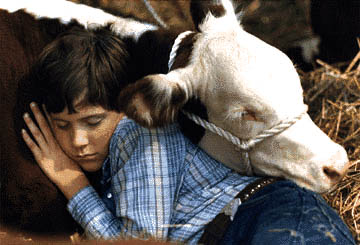The Michigan State Agricultural Society sponsored Michigan’s first state fair in Detroit, September 25-27, 1849. It was the second state fair in the United States. The first was in New York.
The Michigan State Fair was almost derailed by political squabbling. One of the foremost advocates of an annual fair was the Democratic governor of the state, Ephradatus Ransom. He also was president of the Michigan Agricultural Society, and some of the other officers of the society were members of his administration. Whig leaders (the Republican party was not formed until 1854) charged that Ransom planned a state fair to promote his political interests, and they advised a boycott. The governor was able to soothe their fears by explaining that it was just coincidence that most of the officers of the fair were Democrats, and Whig opposition subsided.
The editor of The Michigan Farmer wrote for that year’s October 1 issue: “The initial State Fair has been held and it was a triumph. A new era in our history has opened. On Monday the great gathering commenced and on Tuesday the multitudes came pouring in from every quarter and through every channel, by railroad, by steamboat, by stage, in wagons, on horseback and on foot until the streets swarmed with people.”
The admission price was one shilling (about 12 1/2 cents). Some 14,000 tickets were sold at that price, along with 1,400 membership tickets at $1 each. The gate receipts were $3,150, which covered all expenses.
Exhibits were varied: an entire building, Mechanics Hall, measuring 50 x 100 feet, was given over to farm implements and machinery. Another building was reserved for domestic products, including ladies’ needlework and dairy products. A Chicago lady’s quilt was made of 9,800 pieces and depicted the sun, moon, stars, rivers and lakes, a storm, and a rainbow, among other scenes. A much-admired piece of embroidery represented Pharoah, his cup bearer, and his wife, interceding for the Jews.
Mrs. J. Jones of Dearborn won a prize for the best pair of ladies woolen stockings. Mrs. Frederick Buhl (grandmother of Walter Buhl Ford) took first prize for a patchwork quilt. H.R. Andrews of Detroit won the plowing match, plowing one-quarter acre in 43 minutes. He won $10. John G. Morse of Ann Arbor was awarded a prize for an essay on “The Culture of Wheat.”
Fairgoers eagerly sought out the latest invention — the safety pin — but it did not make its appearance until the following year. Also appearing in 1850 were Sir David Brewster’s stereo camera and Oliver Wendell Holmes’ steropticon viewer. Even with such attractions, the resounding success of the first fair was unfortunately not repeated the following year, when the fair was held in Ann Arbor.
The fair was moved back to Detroit the third year, and for another 4 years thereafter. In subsequent years, it was also rotated among a series of Michigan cities such as Kalamazoo, Jackson, Battle Creek, Adrian, Saginaw, Lansing, Grand Rapids and Pontiac before settling in at the Woodward and Eight Mile Road site in Detroit in 1905.
The state fair was designed to encourage interaction between rural agriculture and urban industry. It quickly evolved into a rich blend of education, recreation and entertainment. In 1853 the fair opened on September 28, a day that “was quite cool, but not sufficiently so to render it uncomfortable.” The latest machinery, a Dry Land and Under Water Excavator (“an ingenious piece of mechanism” possessing “properties of an excavator [and] a pile-driver”), was shown alongside a screw-and-lever cheese press and a lightning rod and point. The Hall of Fine Arts displayed daguerreotypes and paintings near the Dairy and Field Crop building, which exhibited “one beast big enough almost to feed a regiment.”
By 1855 the state fair covered “about 20 acres” and included a Mechanics’ Hall. “No pain or expense is being spared to make everything complete,” the Detroit Free Press reported prior to the opening of the 1858 Michigan State Fair. That year, the fairgrounds were located in Detroit on the west side of Woodward, between Duffield and Adams—”just far enough from the centre of the city to make a pleasant walk.”
Lansing, the state capital, was chosen as the permanent home of the state fair in 1889 because it was the state capital, near the home of the Michigan Agricultural College and centrally located with good rail service. The Michigan State Agricultural Society borrowed money to develop a fairgrounds in Lansing, but bad weather reduced the fair’s income and the society had to sell its property to pay its debts. (The Lansing Businessmen’s Association purchased the land and later sold it to R. E. Olds for his automobile factory.)
A band of community leaders, including department store founder Joseph L. Hudson, brought the state fair to its present location in 1905. They purchased 135 acres just south of Eight Mile Road in Detroit and deeded it to the Michigan State Agricultural Society. Three years later the fairgrounds could be reached using city cars of the Detroit United Railway, which carried passengers from all railroad stations and all points of the city, for five cents. The fair settled in Detroit for good. The society managed the State Fair until 1921, when the property was transferred to the State of Michigan.
More highlights:


In the 1880s and ’90s, there was always a contingent of light-fingered pickpockets, three-card monte afficionados and con men at the fair. On one occasion, Mr. William Smith was exhibiting his prize livestock. Mr. Smith was a favorite of most of the “dips” as he visited so many fairs and would cheerfully lose money in games of chance. He had a valuable gold watch, won at an earlier exhibition, and was very proud of it. One hot day, he was taking a nap, and a pickpocket who wasn’t one of the usual fair con men lifted his timepiece. When he woke up and discovered his loss, he made quite a row.
The “boys” heard him, told him to be quiet and to remain where he was. In a few moments, from a corner of the shed, a man’s face appeared. He approached Mr. Smith, and from under his coat, pulled out an old soft hat full of watches. With profuse apologies, he asked Mr. Smith to look over the assortment and see if his was there. It was, and was duly returned.
In 1893, an incipient depression and lack of funds kept the fair from being held, but it was started up again the next year.
By 1913 the state fair’s program included a Detroit Symphony Orchestra concert, a girls’ milking contest, vaudeville shows and the auction of two steers by Governor Wilber M. Brucker. And in the husband-calling competition, Mrs. Effie Mills “proved her prowess . . . retaining the honors she captured last year.”
A second Michigan State Fair was organized by farmers in Michigan’s Upper Peninsula in the 1920s. Escanaba was favored as a location for the new fair because it was centrally located with good rail and road connections. The first Upper Peninsula State Fair was held in 1928 and continues today. Currently, the Michigan Department of Agriculture manages this fair.
The Aerial Circus entertained state fairgoers in 1938 with “The Human Bullet” and “The Aerial Demons,” who performed without a net 150 feet above them. Also featured that year was the “Largest Animated Model Ever Constructed,” boasting “More Than 750 Life Like Figures.”
By the end of World War II, the nonagricultural side of the State Fair had grown, and “the interdependency of agriculture and industry” was stressed. This shift was due in part to the fair’s more urban and industrial Detroit location.
During the 1948 state fair, the Women’s Premium book listed all prizes awarded to women exhibitors in the home arts, including those for two classes of handmade button-holes (“bound by hand” and “handworked”). First prizes were $3.50.
Displays of produce and livestock continued to be the mainstay of the state fair. On August 27, 1950, The Detroit News featured a photo of Pete Hellner, a Washtenaw County farmers who had won more than 1,500 premium ribbons during his 24 successive years of exhibiting hogs.
Throughout the years buildings were added to the fairgrounds, including a bandshell, a poultry building, a coliseum, a dairy cattle barn, a horse exhibit and a grandstand. In 1951, Cunningham’s Drug Stores provided two trains for free rides around the grounds.
Popular entertainers have long appeared at the state fair. Bob Hope, along with Governor G. Mennen Williams, led the 1951 state fair parade from the riverfront to Adelaide Street. Hope, the Ink Spots, Marilyn Maxwell and the Rockettes performed at the state fair that year.
During the 1950s and early 1960s, state fair attendance grew steadily, reaching one million in 1966.

The “baby boom” generation brought an emphasis on families and education to the state fair, which began to feature rides, folk singers, and rock-and-roll by the 1970s and country western events by the 1990s. Teens from the city assisted with the care of livestock being exhibited by 4-H members from the state’s outlying rural communities.

As of the 1990s, all Michigan State Fair buildings had been renovated and the grounds landscaped. Popular with fairgoers is an exhibition where visitors see the live births of farm animals. In 1998, the 25-foot-high Michigan Stove, originally exhibited at 1893 World’s Columbian Exposition in Chicago, was restored and placed on permanent exhibition at the fair.
The last state fair was held in 2009, when then-Gov. Jennifer Granholm ended state financing with the Legislature’s approval because she said the state could no longer absorb the fair’s losses.
After a few years, a private state fair was resumed in Novi.
Sources :
A Brief History of Michigan’s State Fair – Background Reading, courtesy of the Michigan Historical Museum.
Michigan State Fair entry via LostHistory.Net
Michigan State Fair wikipedia entry
Current Michigan State Fair Info
Lauren Abdel-Razzaq, “Novi showplace owner makes pitch to bring back state fair”, Detroit News, May 23, 2012.